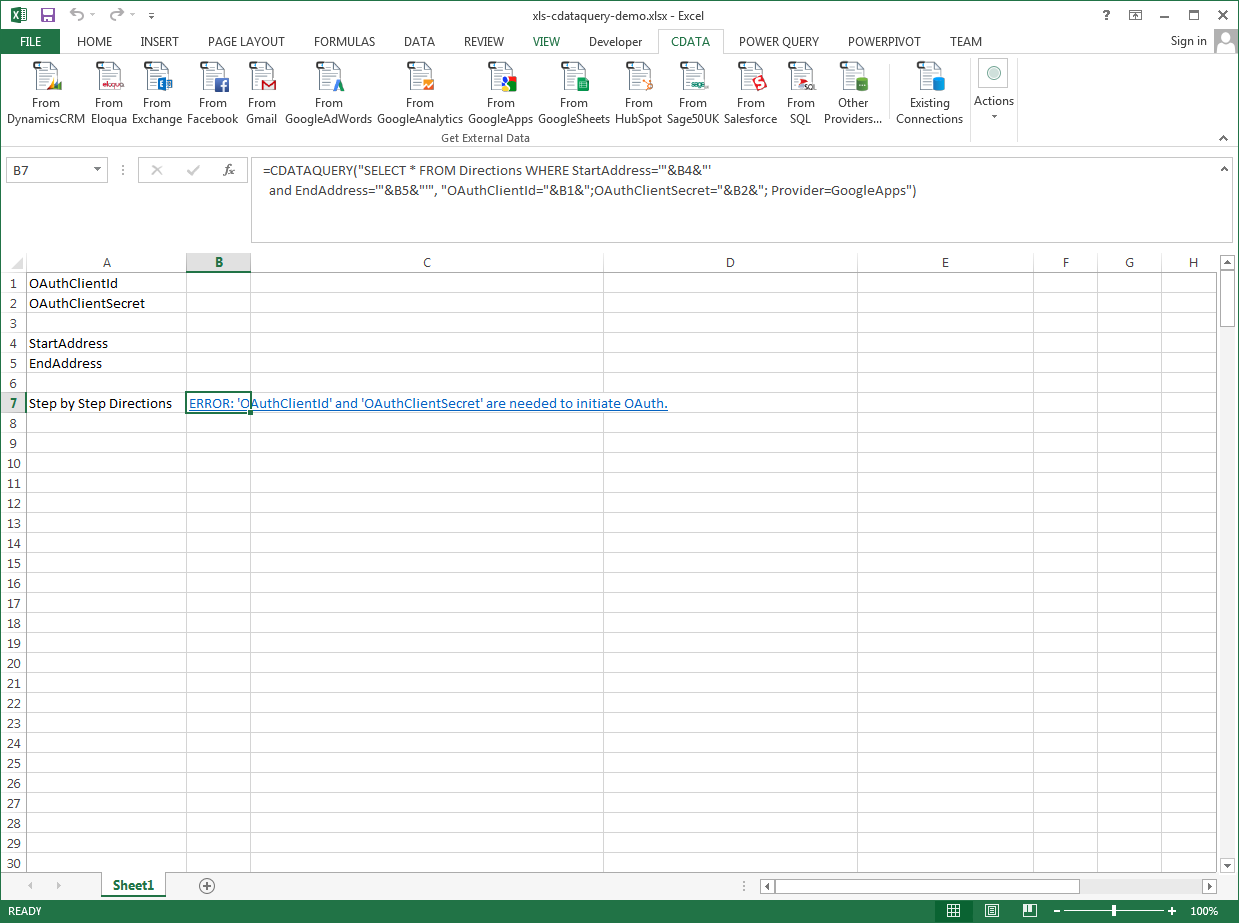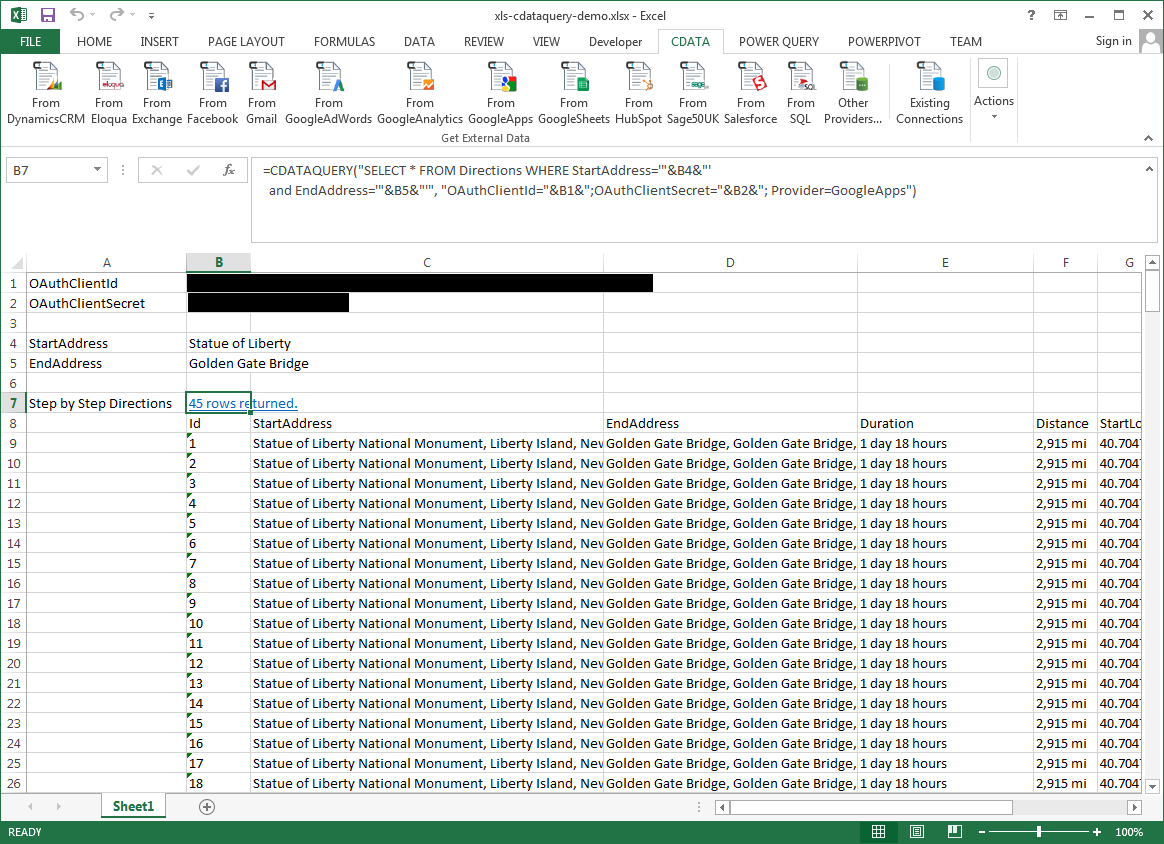Model Context Protocol (MCP) finally gives AI models a way to access the business data needed to make them really useful at work. CData MCP Servers have the depth and performance to make sure AI has access to all of the answers.
Try them now for free →Excel Spreadsheet Automation with the QUERY Formula
Pull data, automate spreadsheets, and more with the QUERY formula.
The CData Excel Add-In for HDFS provides formulas that can query HDFS data. The following three steps show how you can automate the following task: Search HDFS data for a user-specified value and then organize the results into an Excel spreadsheet.
The syntax of the CDATAQUERY formula is the following:
=CDATAQUERY(Query, [Connection], [Parameters], [ResultLocation]);
This formula requires three inputs:
- Query: The declaration of the HDFS data records you want to retrieve, written in standard SQL.
Connection: Either the connection name, such as HDFSConnection1, or a connection string. The connection string consists of the required properties for connecting to HDFS data, separated by semicolons.
In order to authenticate, set the following connection properties:
- Host: Set this value to the host of your HDFS installation.
- Port: Set this value to the port of your HDFS installation. Default port: 50070
- ResultLocation: The cell that the output of results should start from.
Pass Spreadsheet Cells as Inputs to the Query
The procedure below results in a spreadsheet that organizes all the formula inputs in the first column.
- Define cells for the formula inputs. In addition to the connection inputs, add another input to define a criterion for a filter to be used to search HDFS data, such as FileId.
- In another cell, write the formula, referencing the cell values from the user input cells defined above. Single quotes are used to enclose values such as addresses that may contain spaces.
- Change the filter to change the data.
![The outputs of the formula. (Google Apps is shown.)]()
=CDATAQUERY("SELECT * FROM Files WHERE FileId = '"&B5&"'","Host="&B1&";Port="&B2&";Path="&B3&";User="&B4&";Provider=HDFS",B6)



